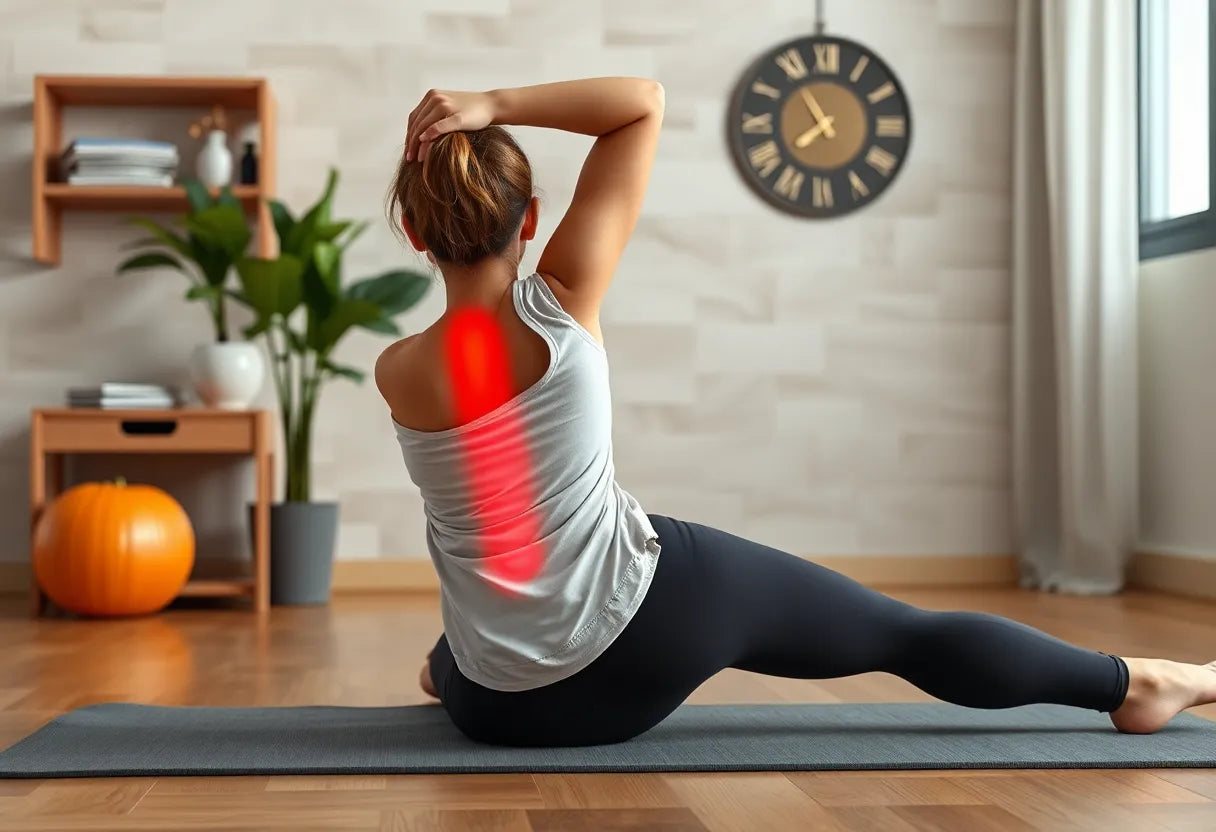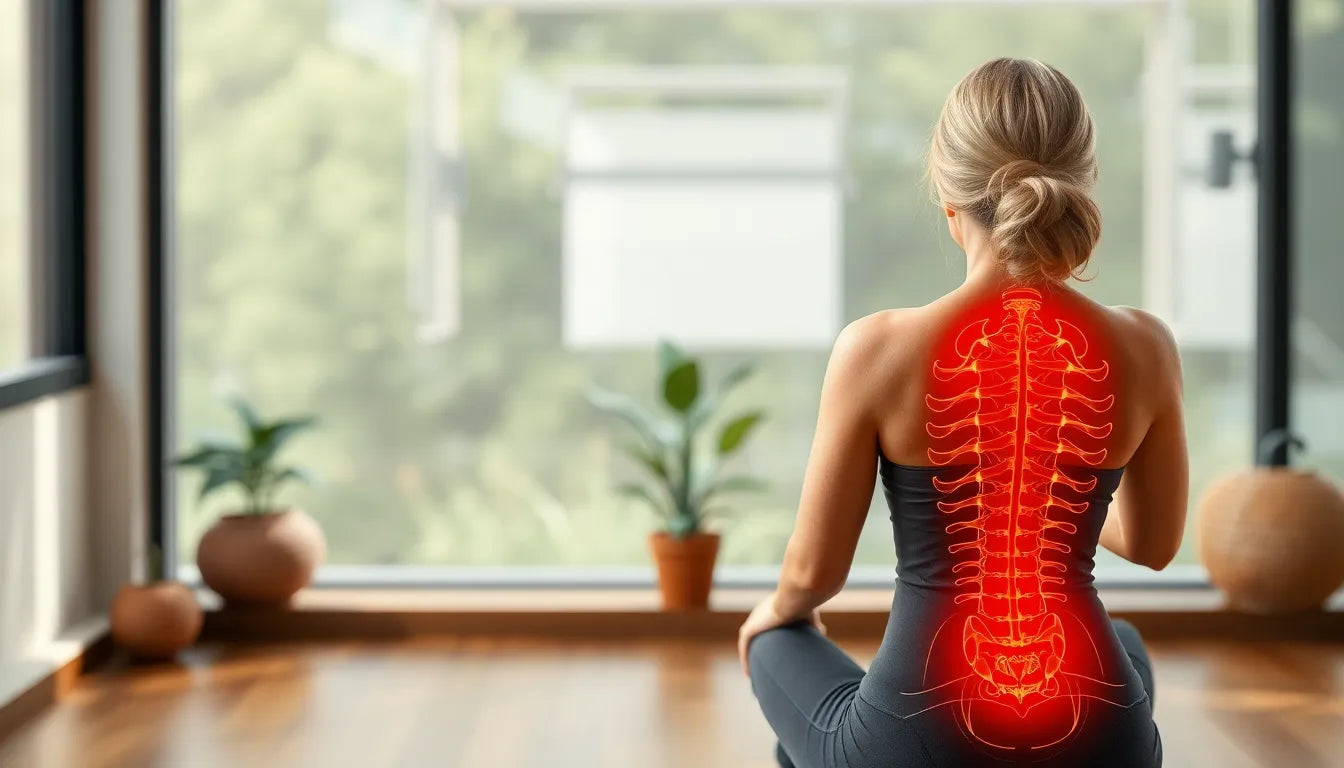Understanding the intricacies of the term "disc" is essential, as its meanings span various contexts, from technology to entertainment. However, when it comes to our health, the term takes on a more critical role, particularly concerning spinal discs. These anatomical structures, nestled between the vertebrae of our spine, are pivotal for maintaining back health and overall mobility. Unfortunately, disc-related pain is a common affliction that affects countless individuals, often leading to a significant impact on daily life and activities.
The importance of addressing disc pain
Disc pain can be a debilitating condition, affecting not just physical mobility but also the quality of life. The discomfort and limitations imposed by disc issues can hinder everyday tasks, making even simple movements a challenge. This underscores the importance of addressing disc pain with effective solutions. Finding the right approach to manage and alleviate disc discomfort is crucial in restoring normalcy and enhancing one's quality of life.
Transform your life with the right solutions
Embarking on a journey to discover relief from disc pain involves exploring a range of solutions tailored to individual needs. From non-surgical interventions to lifestyle adjustments, there are numerous paths to achieving a pain-free life. By understanding the root causes and symptoms of disc pain, individuals can better navigate the available options and find the most suitable treatments. This blog post aims to guide you through these solutions, offering insights into how you can transform your life by effectively managing disc-related issues.
Anatomy of spinal discs
Spinal discs, or intervertebral discs, are the cushion-like structures located between each vertebra in the spine. Their primary function is to absorb shock and provide flexibility, allowing the spine to move smoothly in various directions. Each disc consists of a tough outer layer called the annulus fibrosus and a gel-like center known as the nucleus pulposus. This unique composition enables the discs to handle pressure and maintain spinal alignment.
However, these discs can encounter issues over time. Disc degeneration occurs naturally with aging, as the discs lose hydration and elasticity. This process can lead to reduced shock absorption and increased vulnerability to injury. Another common issue is disc herniation, where the inner gel pushes through a tear in the outer layer, potentially pressing on nearby nerves. Both conditions can result in significant pain and discomfort.

Causes and symptoms of disc pain
Understanding the causes and symptoms of disc pain is vital for effective management. Common causes include:
- Aging: Natural wear and tear lead to disc degeneration.
- Injury: Sudden trauma or repetitive strain can damage discs.
- Lifestyle factors: Poor posture, lack of exercise, and obesity contribute to disc issues.
Symptoms of disc problems often include:
- Back pain that may radiate to the arms or legs.
- Numbness or tingling in extremities.
- Muscle weakness in the affected area.
- Difficulty with movement or flexibility.
Non-surgical treatment options
For many individuals, non-surgical treatments can effectively manage disc pain. These interventions focus on alleviating symptoms and improving quality of life:
- Physical therapy: Tailored exercises can strengthen the back and improve flexibility, reducing pain and preventing further injury.
- Ergonomic aids: Using ergonomic chairs or lumbar supports can enhance posture and minimize spinal strain during daily activities.
- Pain management: Techniques like heat therapy, over-the-counter pain relievers, and prescription medications can provide relief from discomfort.
| Treatment | Effectiveness | Suitability |
|---|---|---|
| Physical Therapy | High | Most individuals with mild to moderate pain |
| Ergonomic Aids | Moderate to High | Individuals with posture-related issues |
| Pain Management | Variable | Short-term relief for acute pain |
By exploring these non-surgical options, individuals can find effective ways to manage disc pain and enhance their quality of life without the need for invasive procedures.

Lumbar support belt
Stabilizes and relieves the lower back with compression; ideal for herniated discs, sciatica, and daily comfort.
Innovative solutions and ergonomic aids
In the pursuit of relief from disc pain, ergonomic aids play a crucial role. These tools are designed to support the natural curvature of the spine, reducing strain and promoting better posture. Products such as ergonomic chairs, lumbar supports, and adjustable desks can significantly alleviate pressure on the spinal discs, thus minimizing pain. By integrating these aids into daily routines, individuals can create a more supportive environment that fosters long-term spinal health.

Women's Posture Shirt™ - Black
Stimulates muscles and improves posture; can relieve pain and tensions through patented Neuroband™ technology.
Beyond products, lifestyle changes are equally important. Regular physical activity, maintaining a healthy weight, and practicing good posture are vital habits that work in tandem with ergonomic aids to prevent and manage disc pain. These adjustments not only contribute to immediate relief but also promote sustainable health benefits over time.
When to consider surgical options
While non-surgical treatments are effective for many, there are situations where surgery may be necessary. If disc pain persists despite conservative measures, or if there is significant nerve compression leading to severe symptoms such as loss of bladder control or muscle weakness, surgical intervention might be considered. Procedures like discectomy, laminectomy, or spinal fusion can provide relief by addressing the underlying issues directly. However, surgery should always be a last resort after exploring all other options with a healthcare professional.
Conclusion: Empowering your journey to pain relief
Addressing disc pain requires a comprehensive approach that combines innovative solutions, lifestyle changes, and, when necessary, medical interventions. By understanding the anatomy and causes of disc pain, individuals can make informed decisions about their treatment options. Embracing ergonomic aids and adopting healthier habits can lead to significant improvements in daily life, empowering individuals to live pain-free and regain their quality of life.
As you explore these solutions, remember that the journey to relief is personal and may require a combination of strategies tailored to your specific needs. With persistence and the right support, achieving a pain-free life is within reach.
Frequently Asked Questions
What is a herniated disc, and how is it diagnosed?
A herniated disc occurs when the inner gel-like core of a spinal disc pushes through a tear in the outer layer, potentially pressing on nearby nerves. Diagnosis typically involves a physical examination, medical history review, and imaging tests such as MRI or CT scans to confirm the condition.
Can disc degeneration be reversed?
Disc degeneration is a natural part of aging and cannot be reversed. However, its progression can be managed through lifestyle changes, physical therapy, and ergonomic aids to alleviate symptoms and improve quality of life.
What are the best exercises for disc pain relief?
Exercises that focus on strengthening the core, improving flexibility, and enhancing posture are beneficial for disc pain relief. Activities like yoga, pilates, and specific physical therapy exercises can help support spinal health and reduce pain.
How do ergonomic aids help with disc pain?
Ergonomic aids are designed to support the spine's natural alignment, reducing strain on the discs. By promoting better posture and minimizing pressure on the back, these aids can alleviate discomfort and prevent further injury.
When should I see a doctor for disc pain?
If disc pain persists despite home treatments, or if you experience severe symptoms such as numbness, weakness, or loss of bladder control, it is important to seek medical advice. A healthcare professional can provide a comprehensive evaluation and recommend appropriate interventions.
Kilder
- SØRNES Privathospital. ”Øre og Hørelse.”
- AudioNova. ”Høretab.”
- AROS Privathospital. ”Hørenedsættelse.”
- Ugeskriftet. ”Udredning og behandling af dysfungerende eustakisk rør hos voksne.”
- Rigshospitalet. ”Center for Hørelse og Balance.”
- Helsevej. ”Hørelse.”
- Audika. ”Høretab i et øre.”
- Sundhed.dk. ”Hørenedsættelse - hvad kan det skyldes?”
- Sprog og APD. ”Sanseforstyrrelser.”
- Høreservicedanmark. ”Operation og Hørelse.”


















